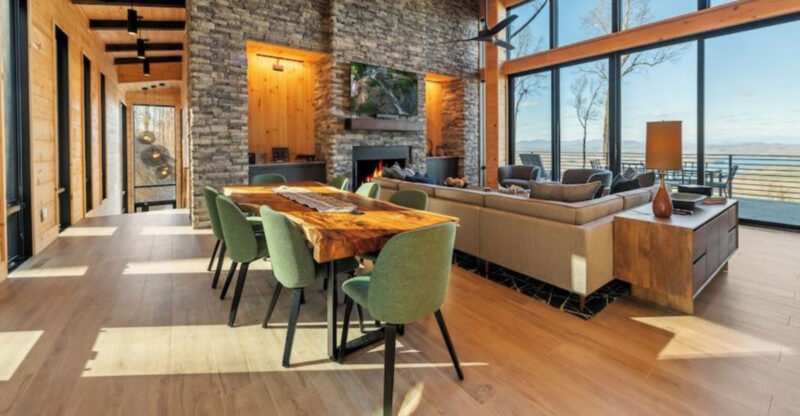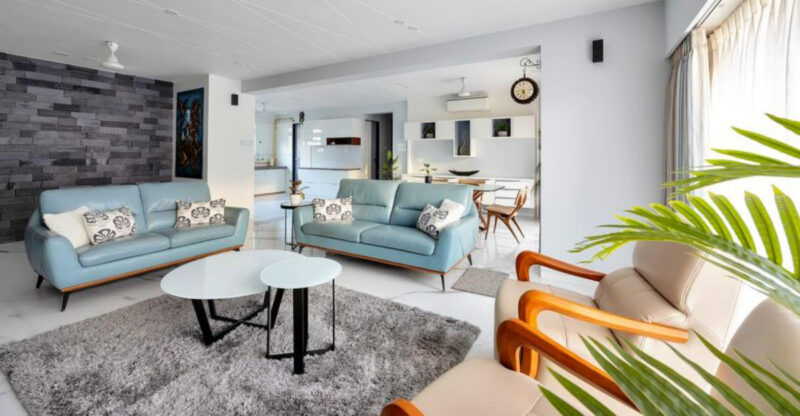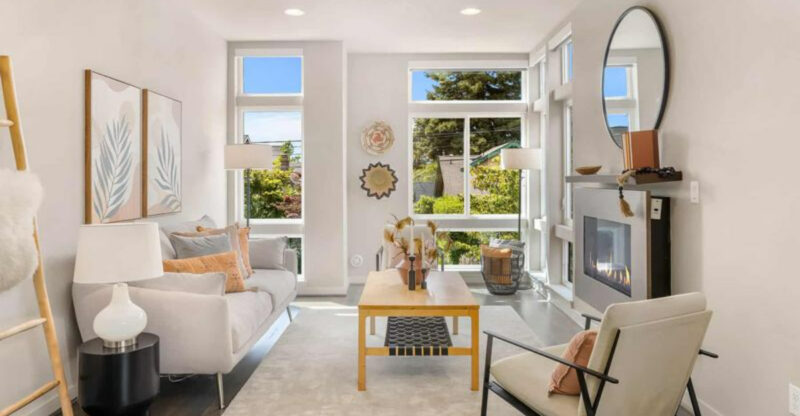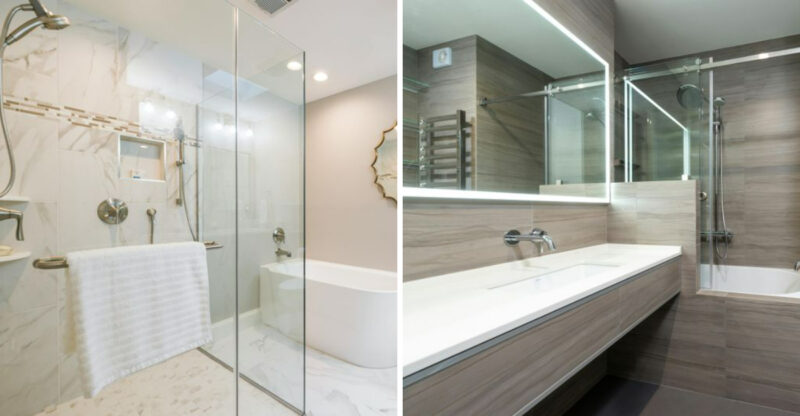12 Outdoor Decor Styles On The Way Out
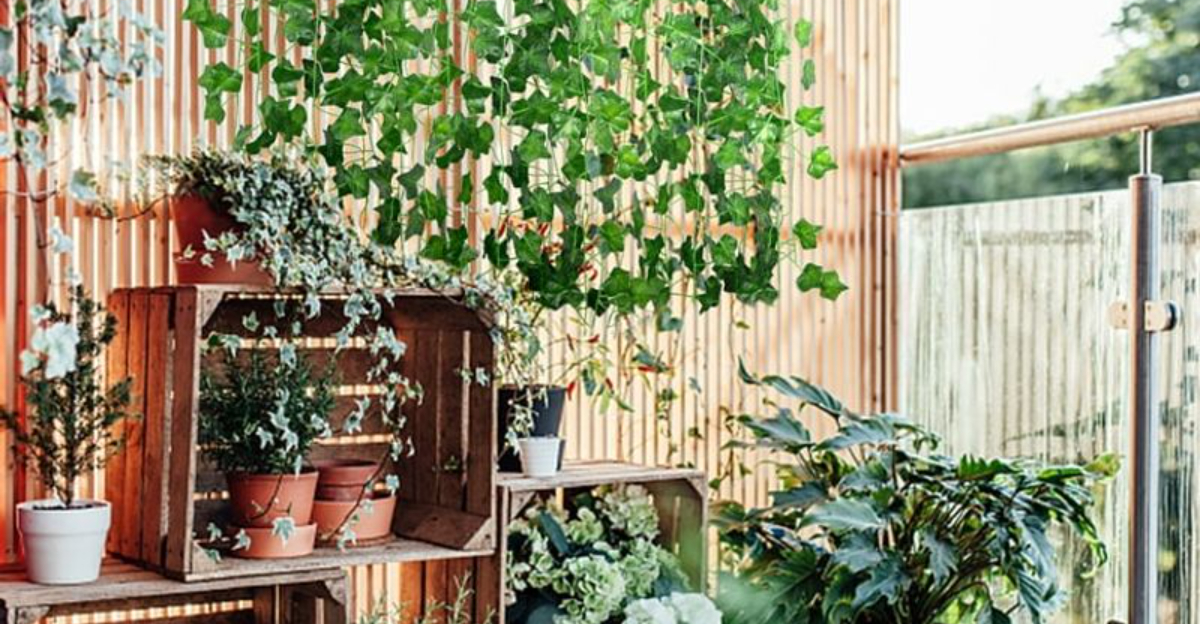
Outdoor spaces have become extensions of our homes, reflecting our personal style just as much as our living rooms.
But like indoor decor, outdoor design trends come and go. What once seemed fresh and exciting can quickly become dated and tired.
I’ve noticed several once-popular outdoor decorating choices that designers and homeowners are now leaving behind for more contemporary alternatives.
1. Plastic Wicker Furniture
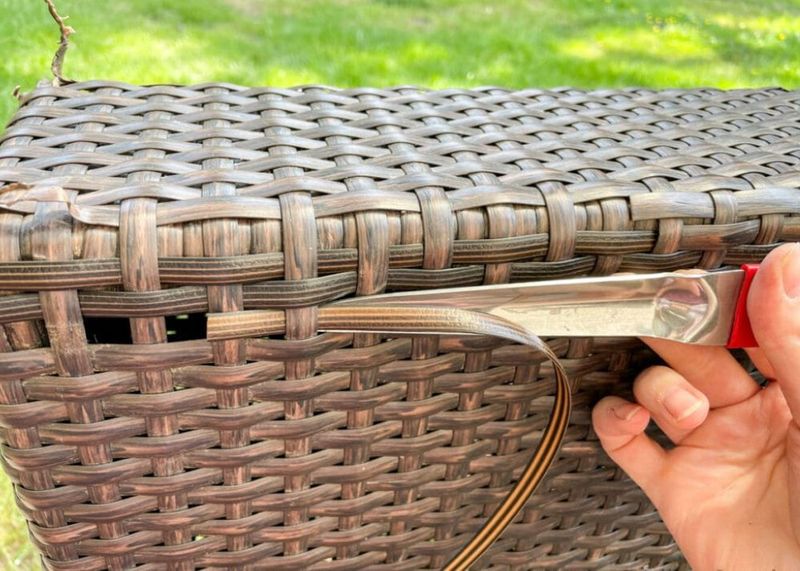
Remember when those shiny plastic wicker sets were everywhere? The initial appeal made sense – affordable, weather-resistant, and resembling natural materials. But today’s homeowners are turning away from these synthetic knockoffs.
The telltale shine and uniform patterns scream artificial from a mile away. Plus, they tend to fade unevenly, crack in extreme temperatures, and ultimately end up in landfills where they’ll remain for centuries.
Modern alternatives include genuine rattan for covered areas, sustainably harvested wooden furniture, or high-quality metal pieces with clean lines. Even recycled plastic lumber offers a more authentic appearance while providing the durability we all need for outdoor spaces.
2. Brightly Colored Gazing Balls
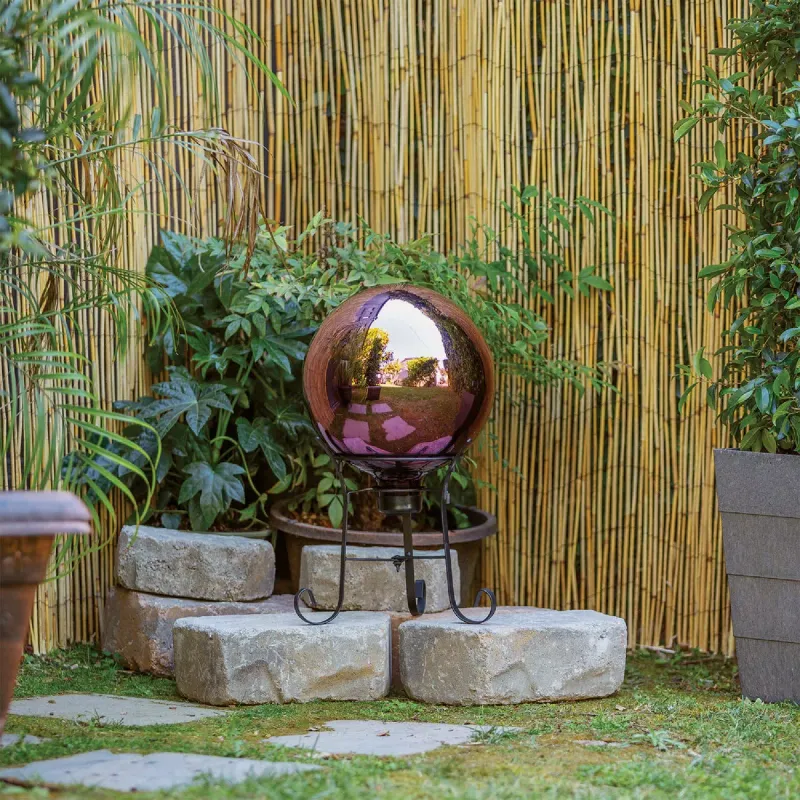
Those shimmering, colorful glass or plastic orbs once dotted gardens across America. Positioned on pedestals or nestled among plants, gazing balls were meant to add whimsy and reflection to outdoor spaces.
The problem? Their loud colors and mirror-like surfaces create a jarring contrast with natural elements. They’ve become visual clutter rather than artistic accents. Many homeowners find them distracting rather than enhancing.
If you still love reflective elements, consider subtler alternatives like small reflecting pools, burnished metal sculptures, or even strategically placed mirrors that amplify light and space. These options integrate with landscapes rather than competing with them for attention.
3. Overly Themed Garden Gnomes
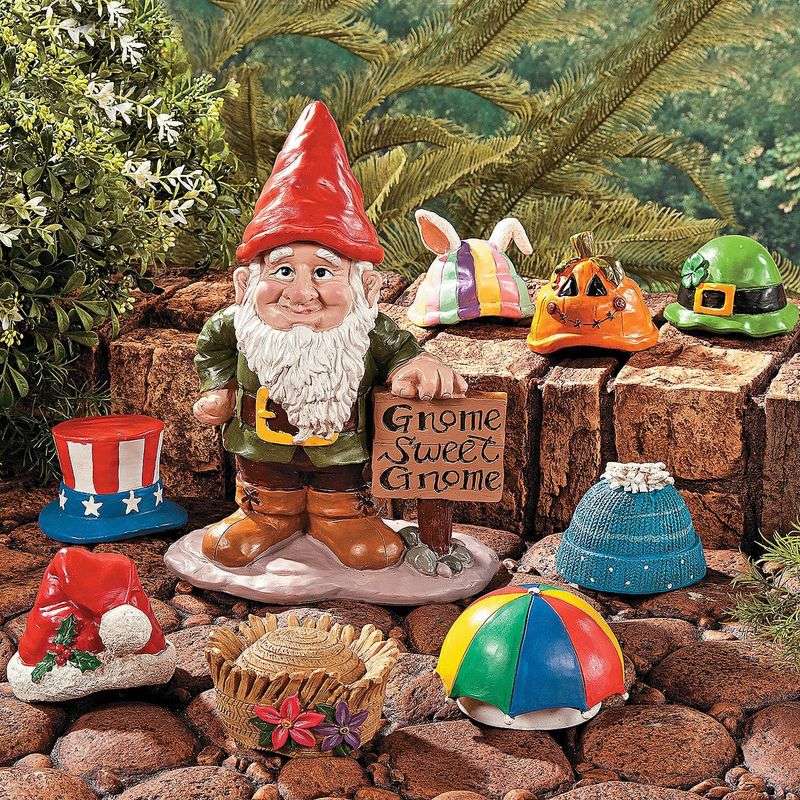
Gnome armies have invaded countless gardens with their fishing poles, wheelbarrows, and cheeky expressions. While a single, well-placed gnome might add character, collections have crossed into kitsch territory.
The trend of themed gnome displays whether sports teams, holidays, or pop culture references has reached its peak. Designers note that such literal decorations often distract from the natural beauty of outdoor spaces rather than enhancing them.
For personality without the cliché, consider artisanal garden sculptures, interesting driftwood pieces, or locally made pottery. These alternatives add unique character while maintaining sophistication. If you can’t part with your gnome collection, perhaps rotate just one or two seasonally rather than displaying the entire village.
4. Tiki Torches Everywhere
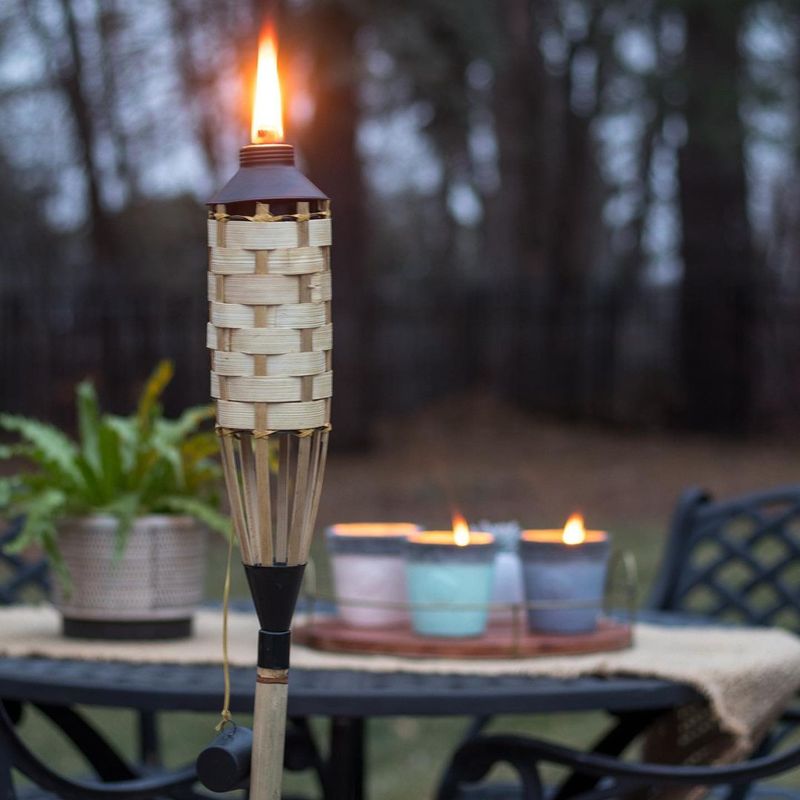
The backyard tiki explosion that began decades ago has finally burned out. Lining walkways and surrounding patios with rows of identical bamboo torches creates a dated, resort-wannabe look that designers are leaving behind.
Beyond aesthetics, these torches pose practical problems. They create uneven lighting, require constant fuel refills, and present fire hazards, especially in dry climates or windy conditions. The cultural appropriation aspect has also made many homeowners reconsider this particular style.
Modern alternatives include solar path lights, stylish lanterns, or permanent gas fixtures that provide consistent illumination. String lights draped through trees or along fences offer charming ambient lighting without the flames. These options deliver the warm glow we crave without the outdated tropical theme park vibe.
5. Faux Stone Fountains
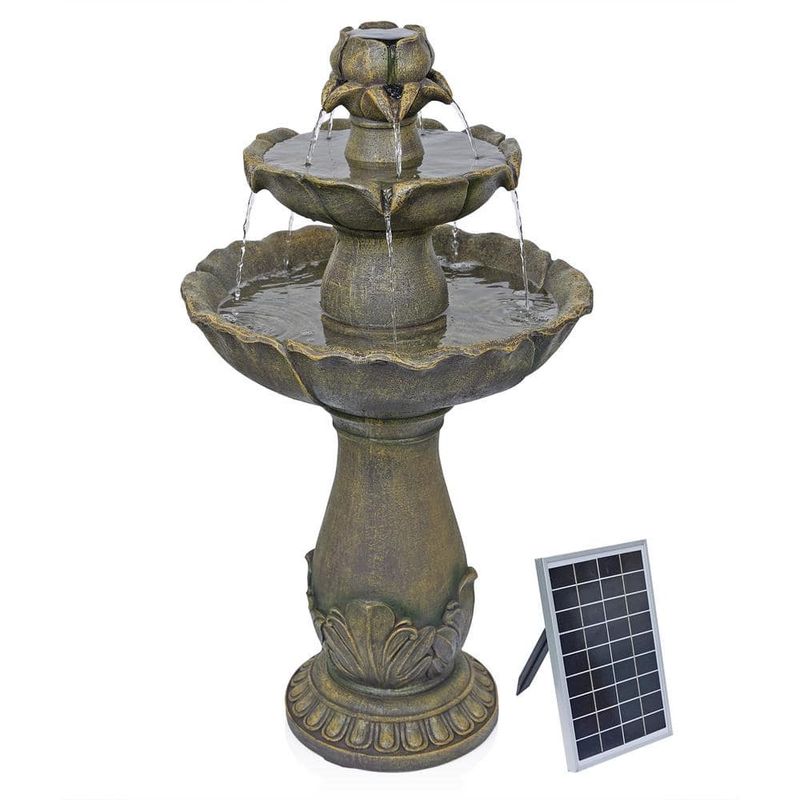
Those mass-produced, lightweight plastic fountains designed to mimic expensive stone have lost their appeal. Often featuring cherubs, Greek figures, or tiered basins, these pieces attempt grandeur but achieve the opposite effect.
The material inevitably reveals itself through hollow sounds, visible seams, and rapid deterioration. After a season or two, they typically develop water stains, algae buildup, and fading that’s impossible to reverse. The pumps frequently fail, leaving stagnant water that attracts mosquitoes.
Homeowners seeking water features now gravitate toward simpler, authentic designs – natural stone basins, ceramic vessels, or even repurposed items like copper pots or concrete bowls. These alternatives provide the soothing sound of water without pretending to be something they’re not.
6. Outdoor Rugs With Busy Prints
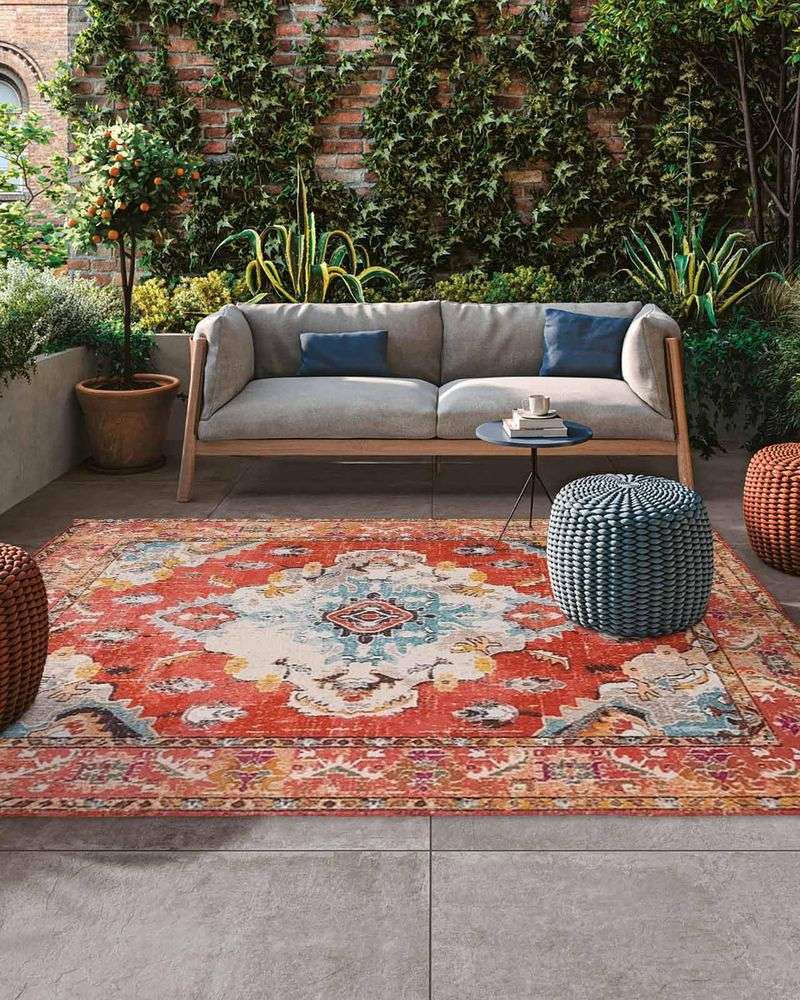
Bold chevrons, oversized florals, and geometric patterns once dominated outdoor spaces. These rugs with busy prints were initially exciting additions to patios and decks, bringing indoor comfort outside.
However, designers now note that these attention-grabbing designs compete with rather than complement natural surroundings. They visually shrink spaces and quickly show dirt, fading dramatically after exposure to sun and rain. Many contain synthetic materials that break down into microplastics.
Today’s trend leans toward subtler options – natural fiber rugs in neutral tones, simple borders, or minimal patterns that won’t overwhelm the eye. These choices create a more serene foundation that allows landscaping and architectural elements to shine while still defining seating areas and adding necessary texture.
7. Metal Sun Wall Art
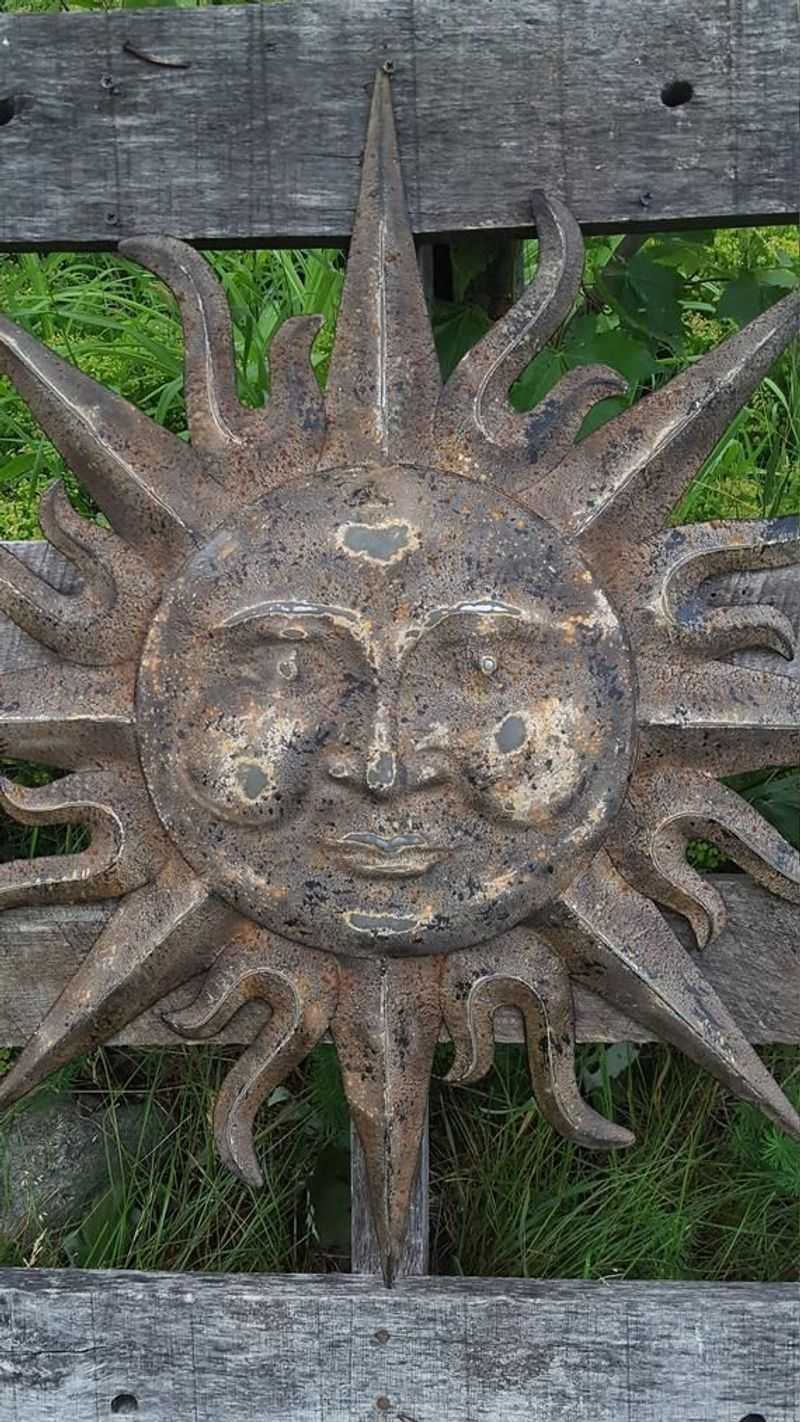
Those grinning metal suns with twisted rays have adorned exterior walls for decades. Often in copper, bronze, or painted finishes, these pieces became the default decoration for bare outdoor walls across suburban America.
Designers note that these mass-produced decorations have become visual clichés that lack personality. Their ubiquity has rendered them virtually invisible, failing to make the statement they once did. The metal often weathers poorly, creating rusty streaks down siding or fences.
Fresh alternatives include living wall installations, custom metal address numbers, abstract sculptures, or vintage architectural salvage pieces. Even a well-chosen mirror designed for outdoor use can add interest while reflecting garden views. These options provide unique character that mass-produced sun faces simply can’t match.
8. Solar Lights Shaped Like Animals

Frogs, owls, and butterflies that glow at night once seemed like playful additions to garden paths. These novelty solar lights promised charm and functionality but delivered neither effectively.
The reality is that most provide weak, inconsistent illumination while looking distinctly out of place during daylight hours. Their plastic construction typically yellows and cracks within a season or two. The cutesy designs clash with most thoughtful landscaping approaches, creating a disjointed look.
Quality pathway lighting now focuses on simple, architectural designs that direct light where needed without calling attention to the fixtures themselves. Recessed lights, minimalist stakes, or even string lights woven through plantings offer effective illumination without the kitsch factor. These alternatives enhance safety and ambiance without compromising your garden’s design integrity.
9. Heavy Wrought Iron Furniture
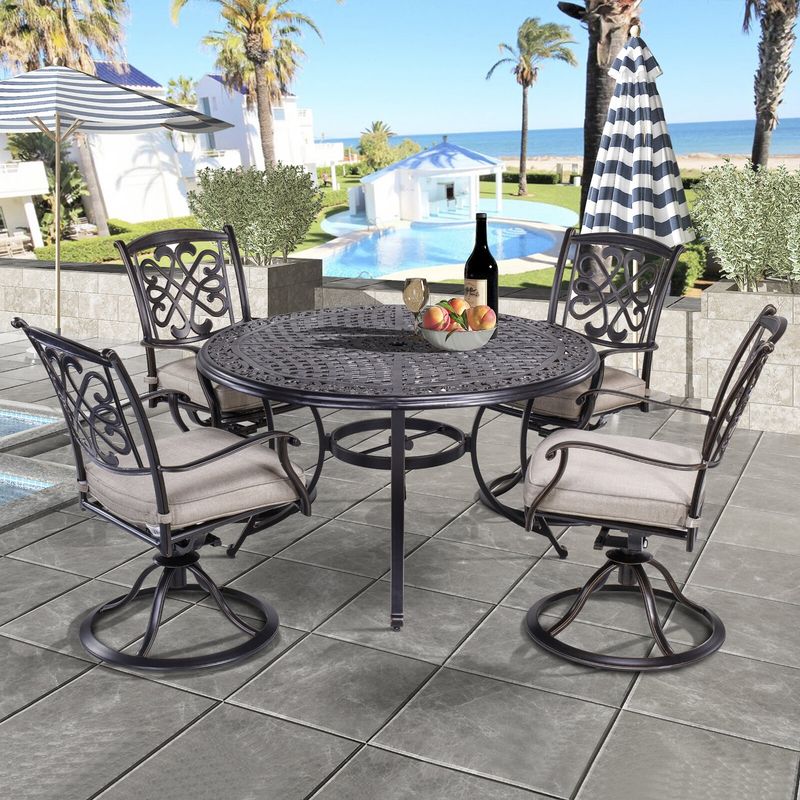
Those ornate black wrought iron sets with scrollwork and rose patterns have dominated patios for generations. While undeniably durable, these heavyweight pieces have fallen out of favor for good reasons.
The bulky frames are notoriously uncomfortable without extensive cushioning. They’re virtually immovable once placed, limiting flexibility for gatherings. During summer months, the metal becomes scorching hot in sunlight, making spontaneous seating risky. The intricate designs collect water, encouraging rust despite regular maintenance.
Modern outdoor spaces feature lighter aluminum frames with clean lines, mixed material pieces combining wood with metal accents, or modular arrangements that adapt to different occasions. These contemporary alternatives prioritize both comfort and style while offering the durability outdoor furniture requires without the permanent, heavy presence of traditional wrought iron.
10. Painted Wooden Cutout Figures
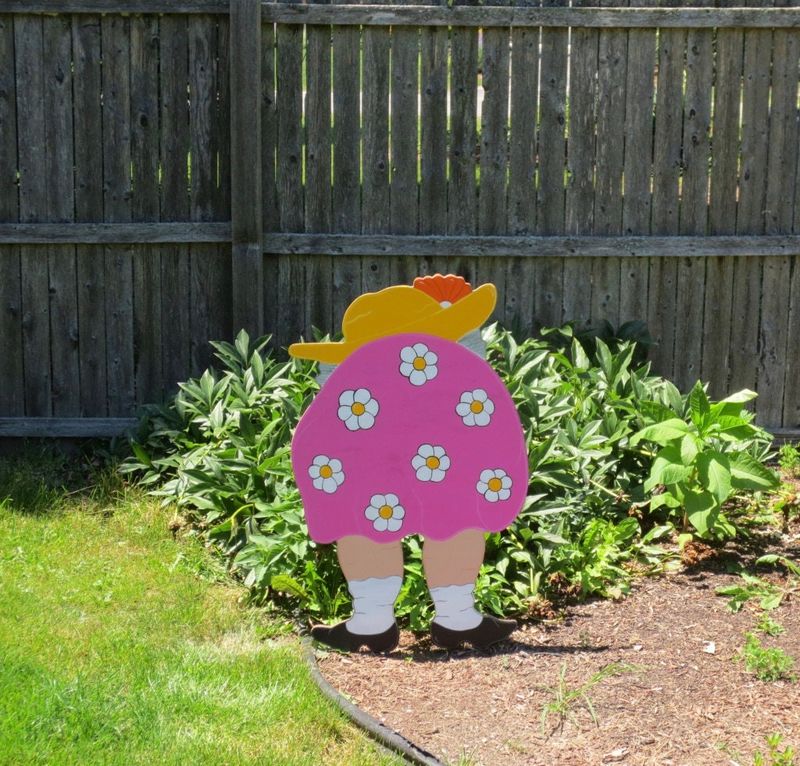
Life-sized wooden silhouettes of bending gardeners, peeking children, or animals once populated suburban yards across America. Often homemade or purchased from craft fairs, these painted cutouts were meant to add whimsy and personality to gardens.
Unfortunately, these flat decorations tend to weather poorly, with paint fading and wood warping after exposure to the elements. They create a two-dimensional effect in an otherwise three-dimensional landscape. The cartoon-like quality can make sophisticated garden designs feel instantly less refined.
Gardeners seeking character now incorporate sculptural elements with more substance – weather-resistant art pieces, interesting driftwood arrangements, or architectural salvage items. Even well-placed boulders or unique plant specimens can create focal points that feel integrated rather than applied as afterthoughts.
11. Artificial Ivy Or Vines
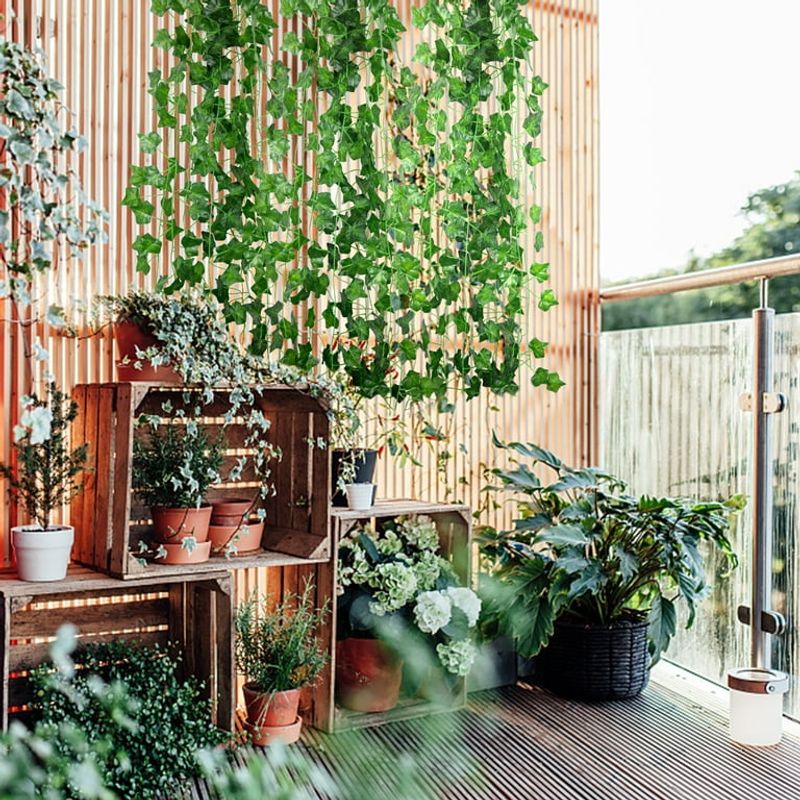
Plastic greenery once seemed like a clever solution for bare walls and fences. The promise of instant, maintenance-free coverage led many homeowners to install artificial ivy, grape vines, or flowering garlands throughout their outdoor spaces.
Time has revealed the drawbacks of this approach. UV exposure quickly fades the color to an unrealistic blue-green. Dust and pollen accumulate on the plastic surfaces, requiring regular cleaning that real plants don’t need. Birds sometimes attempt to nest in these fake vines, only to abandon their efforts when they discover the deception.
Today’s alternatives include fast-growing actual vines like clematis or jasmine on proper trellises, espalier fruit trees against walls, or vertical garden systems that support real plants. These living options provide genuine environmental benefits while creating authentic beauty that plastic simply cannot replicate.
12. Large, Bold Striped Patio Umbrellas
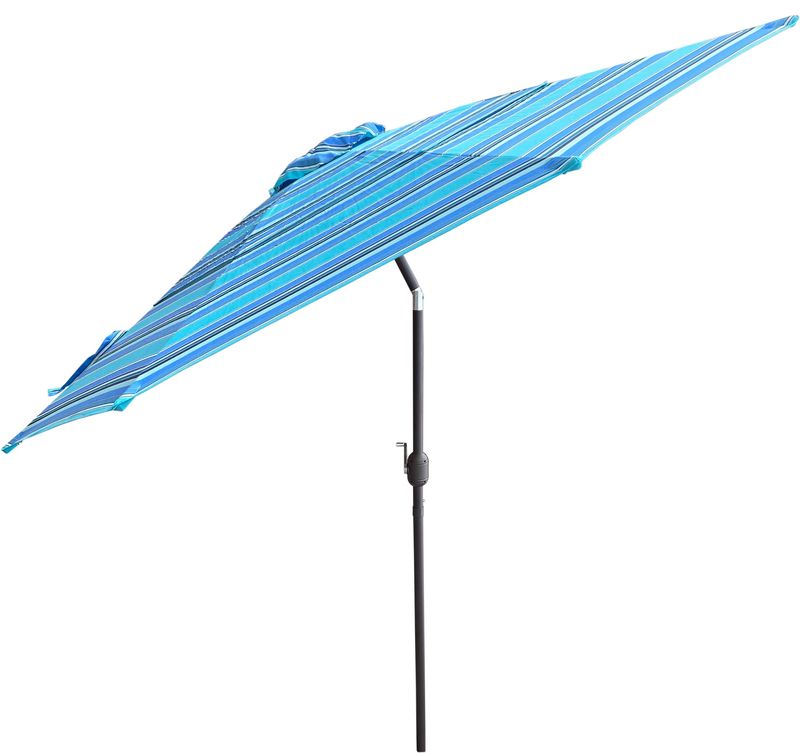
Those candy-striped beach umbrellas in bright primary colors once dominated backyard scenes. With their bold red and white or blue and white patterns, they made a statement – unfortunately, not always a sophisticated one.
Design experts note that these loud patterns fight for attention with gardens and architecture rather than complementing them. The colors fade unevenly, often looking shabby after just one season. Their carnival-like appearance can make even elegant outdoor furniture look less refined.
Current trends favor solid-colored canopies in natural tones like sand, sage, or terracotta that blend with landscapes. Textured fabrics with subtle patterns provide interest without overwhelming the eye. These understated options create shade without shouting for attention, allowing other elements of your outdoor design to shine while still performing their essential function.



